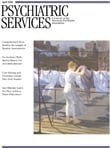Understanding Trauma: Integrating Biological, Clinical and Cultural Perspectives
This edited volume emerged from a series of workshops and conferences organized by the Foundation for Psychocultural Research. The intention of the three editors was to bring together a wide-ranging group of experts in neuroscience, behavioral science, and anthropology who could commonly address the subject of traumatic experience in order to undertake a creative exchange and make "significant steps toward the integration of diverse models and levels of explanation."
To achieve this goal, the book is divided into three sections. The first section focuses on neurobiological perspectives of trauma and is largely concerned with basic science and thus is likely to present the most significant challenge to readers without a biological orientation. Recognizing the tendency of basic science research to rapidly outdate itself, the editors state that "some of the material presented in this section will no longer be cutting edge by the time this book appears in print." The second section explores some clinical issues surrounding the treatment of traumatized individuals, with contributions from several notable figures in the world of traumatic stress studies. The focus of the third section is on cultural perspectives of trauma and the ways in which any comprehensive understanding of the subject must explore the cultural context and collective meaning—and memory—of any event. The contributors to this section are mainly anthropologists, who view the subject through the lens of their field experiences.
Although the stated goal of the volume is one of integration, a multiauthored book makes this task a challenging one, so the editors attempt to compensate by beginning each section with a summary that places the individual contributions within the overall context and intent of the book. Their introduction neatly summarizes the challenges inherent in interdisciplinary integration. As with most edited volumes, there is variation in the readability of the various contributions, with some of the chapters presupposing greater knowledge of the subject than others.
Understanding Trauma is a textbook, not a book on trauma for the general reader. This volume is more for the specialist in psychological trauma who wishes to expand his or her knowledge and move into more interdisciplinary studies or for the specialist in transcultural psychiatry who wishes to know more about psychological trauma. Clinicians working with clients from diverse cultural backgrounds are likely to find material in this volume to be particularly helpful.



